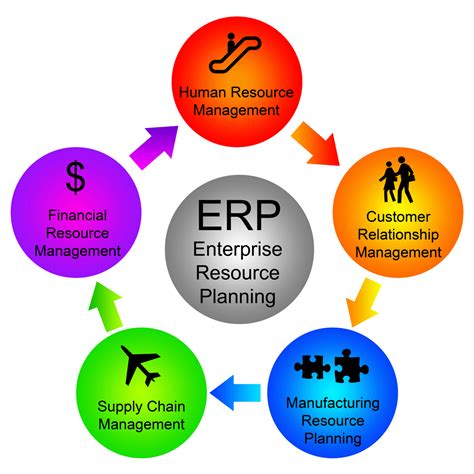
ERP (Enterprise Resource Planning) solutions are software systems that integrate and automate various business processes within an organization. These solutions provide a centralized and unified platform for managing different aspects of a business, including finance, human resources, manufacturing, supply chain, customer relationship management, and more.
ERP solutions play a crucial role in streamlining and optimizing business operations. By consolidating data from various departments and functions, organizations can gain real-time visibility into their operations, make informed decisions, improve efficiency, and enhance overall productivity.
In today’s fast-paced and highly competitive world, businesses need to equip themselves with robust and flexible software solutions to manage their daily operations efficiently. Among the most sought-after solutions is Enterprise Resource Planning (ERP), a comprehensive system that integrates various functional areas of a business, such as finance, procurement, logistics, inventory management, and human resources. This article explains what ERP solutions are, types of ERP, their advantages, and the challenges they pose to organizations.
Definition of ERP Solutions
According to Gartner, Inc., an American research and advisory firm, Enterprise Resource Planning (ERP) is defined as “the ability to deliver an integrated suite of business applications, anchored around financials, manufactured for the cloud, on-premises or hybrid deployment.” Simply put, ERP solutions refer to a software package that combines various business processes into a single database, enabling seamless data exchange between departments, enhancing operational efficiency, and improving decision-making.
Types of ERP Solutions
ERP solutions come in different flavors, catering to varying business sizes, industries, and requirements. Here are four common categories of ERP systems:
- Generalist ERP: Also called Tier I ERP, generalist ERP targets large corporations, covering multiple functional areas, including finance, manufacturing, supply chain, and human resources. Examples include Oracle JD Edwards, Microsoft Dynamics 365, and SAP S/4HANA.
- Vertical Market ERP: Specialized for particular niches, vertical market ERP suits industries with unique requirements, such as healthcare, construction, or retail. These systems offer modules tailored to the target sectors, providing deeper insight into their processes and challenges.
- Open Source ERP: Freely available, open-source ERP empowers developers to modify the codebase, granting endless customization potential. Popular open-source ERP solutions include Apache OFBiz, webERP, and ADempiere.
- Two-Tier ERP: Large organizations having subsidiaries in different locations may struggle to reconcile conflicting data sets arising from heterogeneous ERP systems. Two-tier ERP bridges this gap, combining both parent and child company databases under one roof, promoting consistency, and easing consolidation efforts.
Advantages of ERP Solutions
Implementing an ERP system brings forth manifold benefits, revolutionizing the way businesses function. Here are some compelling reasons to switch to ERP:
- Standardization: ERP systems impose standardized workflows, procedures, and terminologies, erasing ambiguity, and encouraging uniformity.
- Centralization: Unifying fragmented data sources, ERP promotes centralized data warehousing, empowering real-time monitoring and decision-making.
- Visibility: Cross-departmental synchronization reveals previously obscured dependencies, exposing weak links, and avenues for enhancement.
- Accuracy: Consolidating disparate data pools into a unified hub reduces double entries, discrepancies, and inconsistencies, boosting data reliability and credence.
- Reporting: Drill-down, drill-up, and slice-and-dice report generation fortifies analytical prowess, unearthing latent patterns, and correlations.
- Productivity: Streamlined workflows obviate unnecessary steps, expedite cycle times, and release untapped bandwidth, fueling efficiency and output.
- Security: Granular permission controls demarcate authorized access boundaries, thwarting illicit activities, and reinforcing privacy.
- Innovation: Embedded artificial intelligence (AI), machine learning (ML), and robotics process automation (RPA) infuse novelty, sparking innovations and breakthroughs.
Challenges Associated with ERP Solutions
Despite their evident appeal, ERP systems pose formidable hurdles hindering swift adoption and mastery. Common pitfalls include:
- Cost: Initial acquisition, customization, installation, and maintenance costs represent steep entry barriers for cash-strapped firms.
- Resistance: Cultural resistance, fear of obsolescence, and reluctance to abandon familiar routines stymie change management efforts.
- Time: Lengthy implementation periods strain patience, consuming precious resources and delaying gratification.
- Complexity: Steep learning curves deter novice users, exacerbating anxiety, and impeding fluency.
- Integration: Seamlessly meshing divergent systems, formats, and protocols poses considerable challenges, jeopardizing data integrity and completeness.
- Upkeep: Mandatory software upgrades, periodic security patches, and continual maintenance burden strained IT departments.
- Legacy Systems: Preserving heritage systems, preserving institutional memory, and reconciling historical records with contemporary paradigms complicate migrations.
Conclusion
In conclusion, ERP solutions offer tremendous promise, delivering tangible rewards to those daring enough to venture into unfamiliar terrain. Yet, despite irrefutable benefits, ERP systems harbor lurking threats, threatening calamity amidst chaos. Navigating treacherous waters warrants vigilance, persistence, and deft navigation, steering clear of danger zones while exploiting favorable winds. Braving tempests, storms, and squalls, brave pioneers chart ambitious courses, conquering frontiers, and carving legacies destined for eternity. So arm yourself with wisdom, courage, and determination, defying odds, vanquishing adversity, and prevailing against all odds. After all, fortune indeed smiles upon the bold!